The Clean – Faults, Causes and Corrections
Fault Possible Cause Suggested Correction 1. Lifter elevates Buttocks before raising bar Insufficient leg strength Insufficient flexibility Weak posture muscles Ankle tightness Standard strength exercises Lifting standing on blocks Incorporate flexibility as a core element of training Introduce core stability exercises as a core element of training Seek professional advice (shoe implants, screening) 2. Bar ends up being forward Early movement onto toes before the bar reaches the knee Projection of the bar is positioned ahead of the metatarsal-phalangeal joints, with a greater inclination of the shins in the starting position, therefore in lifting the weight the bar has to travel around the knees i.e. the bar turns out to be in front of the lifter. The lifer does not fully straighten the trunk and legs and failing to utilise explosive hip drive Arms bend early at the elbows Elbows are taken back early in the final extension movement The lifter fails to accomplish an upward pelvic rotation at the top of the pull extension Position the bar closer to the ankle joints and ensure the shins at the start have a shallow inclination (Ankle angle should not be less 60-70 degrees. Balance on both feet from start to full extension of the pull Aim for fully extended legs, hips, trunk and shoulders Elbows must move strictly upwards parallel with the trunk throughout the pull 3. Bar is pulled excessively Backward Early movement onto heels Arms bend far too soon Shoulders move back ward Head is thrown back viciously Balance on both feet perform pulls standing on blocks Elbows must move strictly upwards parallel with the trunk throughout the pull Pulls and other movements from blocks set at designated heights Perform Cleans from midthigh/waist using light weights Increase back and abdominal (core) strength utilising specific exercises 4. Bar is lifted Shins are too inclined Position bar over metatarsal- far away from shins in opening phase of Clean Angle of the ankle joint is to acute (less than 60 degrees) Bar is positioned too far from the lifter phalengeal joint 5. Bar travels forward Reacting from the thigh push Lifter thrusts hips through not upward Lifter sufficiently straightens legs but not hips Lifters trunk remains inclined but hips travel forward Ensure correct starting position Keep balance Ensure bar travels in most efficient line Pulls from knee (concentric/eccentric) Shrugs 6. Weak Full Extension Insufficiently strong muscles Too great a weight Lifter fails to place knees under the bar to instigate upward bar trajectory No coordination between extensors of legs, hips and trunk and flexors of arms and shoulders Build strength Perfect practice = perfect skill application Sub component exercises designed to enhance force application Pulls from varying heights 7. Bar Racked but not Secured Lifter does not have sufficient time to rotate elbows Collapsed chest Lifter delays drop and looses momentum Lifter drops rather than drives under the bar Lack of flexibility around joint complexes Emphasise drive under the bar Clean drops from full extension Correct breathing technique 8. Knee Touch Trunk inclined too far forward Elbows not fully rotated Bar not received on clavicles Lethargic descent under the bar Perform properly executed pulling movements Cleans from varying heights Specialised flexibility Perform Bench and Incline Press The Jerk – Faults, Causes and Corrections Fault Possible Cause Suggested Correction 1. Weak Jerk Lifter fails to make the preparatory dip on full feet but on toes Lifter does not balance on two legs Trunk inclines forward Chest drops during dip Hands grip bar too tightly Bar lifts off clavicle during preparatory dip A deep slow dip Slow straightening of the legs Keep the weight of the bar across the clavicles Coordinate muscle and joint action to instigate the necessary force Employ a soft grip to the bar Keep trunk upright Dip on both feet quickly Stop the downward movement sharply Utilise the elasticity of the bar Straighten the legs vigorously Instigate the greatest speed in the upward movement of the bar 2. Bar turns out to be forward The lifters does carry the shoulders and hips under the Centre of Gravity Preparatory dip is performed on the toes The jerk off proceeds forwards and upwards away from the lifter Feet do not spilt equally fore and aft Chest drops Weak postural muscles Elbows are too far back Perform preparatory dip on whole feet Hold elbows slightly forward Jerk off should be strictly upwards Pelvis should be locked Only knees displace form the mid-line Include Jerk Balance as a corrective exercise 2. Lifter drops too much in the Split A slow deep preparatory dip Limited drive from dip Lifter travels very low in split to catch the bar on straight arms Insufficient strength and coordination Increase effort of upward drive Practice Jerk Heaves Half Front Squats Speed 2. Bar is jerked to straight arms but turns to be far back and holding the weight aloft is impossible The Jerk of the bar is not vertical The Jerk has significant horizontal translocation The lifter moves hips, trunk and shoulders too far forward Strict movement in pure vertical plane Ensure hips, trunk and shoulders are placed exactly under the centre of gravity Practice Push Press, Jerk Balance, Jerk Heaves and Jamieson Squat exercises 2. The bar is correctly jerked upwards to straight arms, but Poor movement in elbow joints Insufficient mobility in shoulder joints Excessive flexibility in radio-carpal joints >90 Work on exercises designed to develop flexibility in the elbow and shoulder joints Bandage wrists or make use of wrist-band Position bar closer to wrist joint the lifter cannot hold onto the weight on straight arms degrees Turn forearms slightly out wards on the dip and drive 2. Jerking the bar to arms length the lifter moves around the platform with weight aloft Inexact work of the legs (asymmetrical) Centre of gravity situated outside of the base Head thrown back and lifter looks upwards at the bar Head is forced forward and shoulders extended Legs cross paths Head pressed into chin Execute aggressive jerk off Essential to split the legs fore and aft evenly and maintain shoulder width distance L-R Hips, trunk and shoulders should be directly under bar Head held straight looking forward The above matrix relating to the Clean and Jerk mistakes is by no means exhaustive. Moreover, there are many different and subtle mistakes not listed above. Prevention is better than cure. Technical mistakes need to be nipped as soon as they appear. The correction of mistakes, especially old ones, which are strengthened in the course of training, are very difficult to eradicate. Nowadays technology can assist us a great deal and wherever possible should be an important part of the coaches kit.


